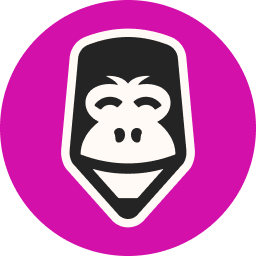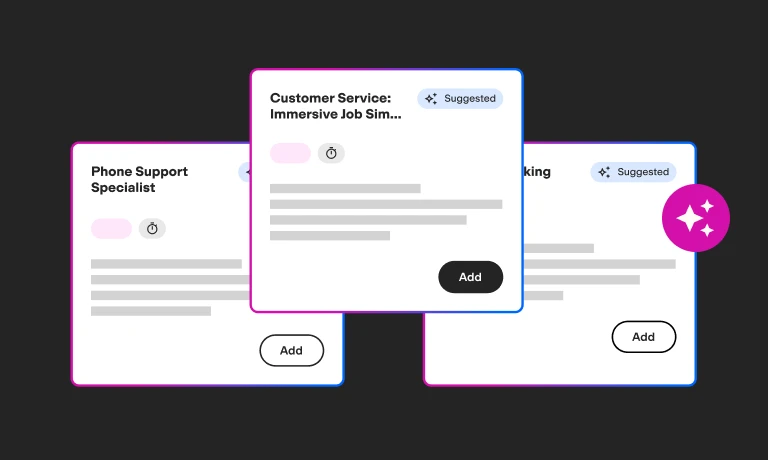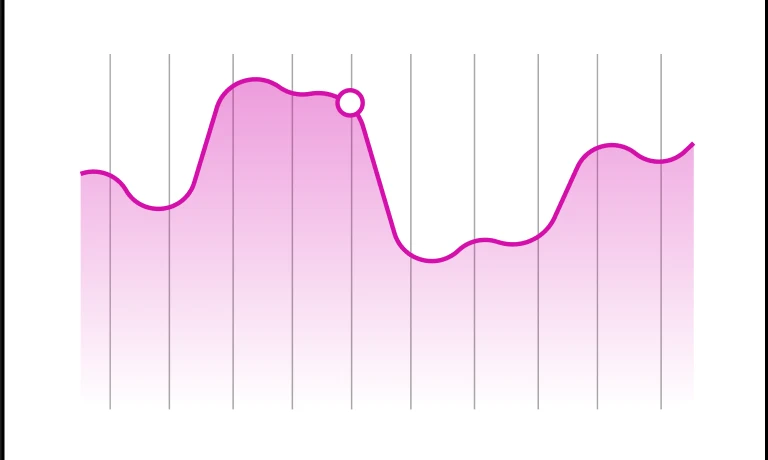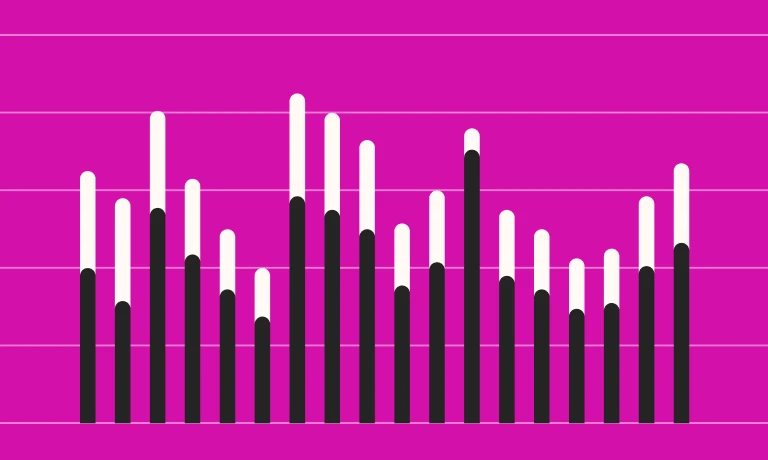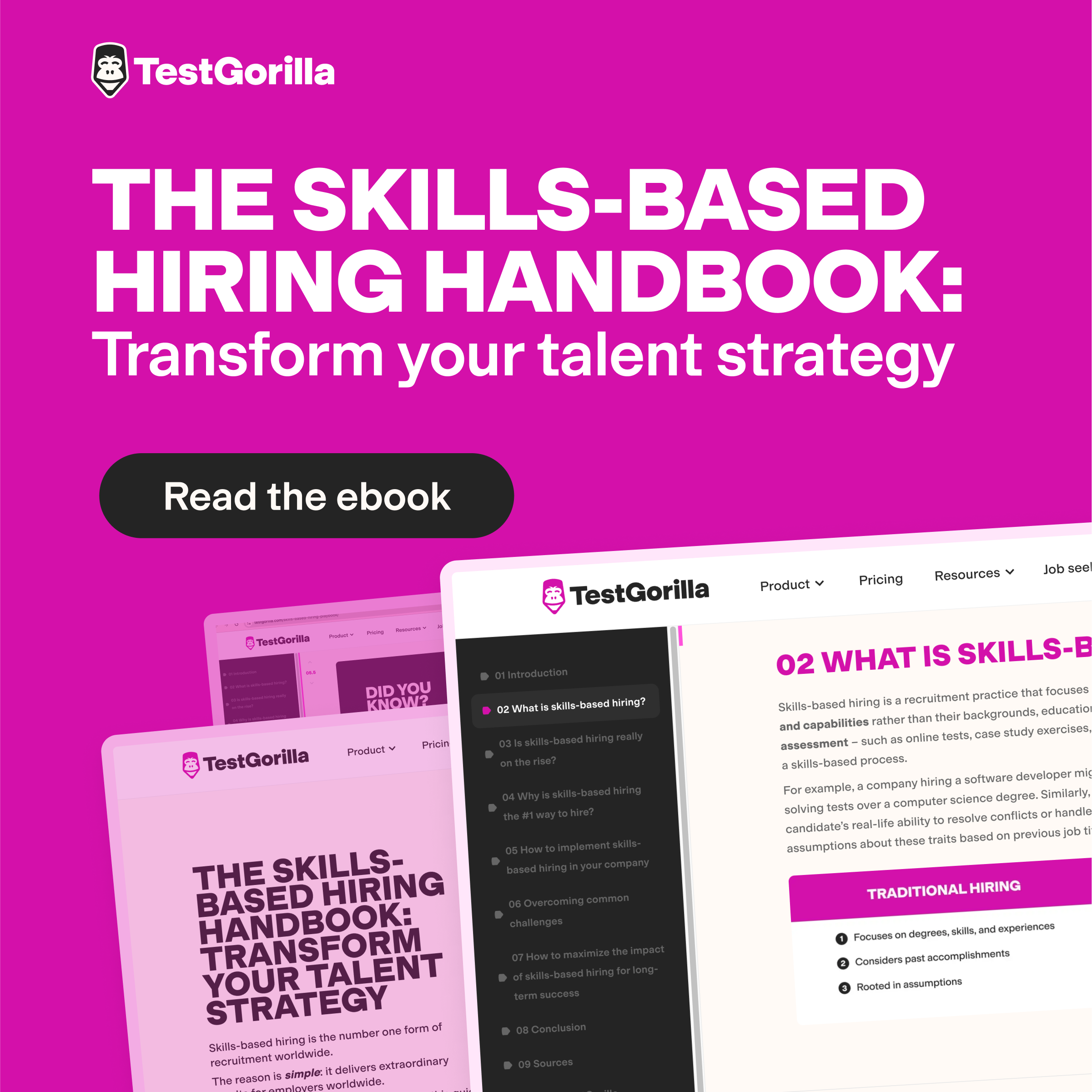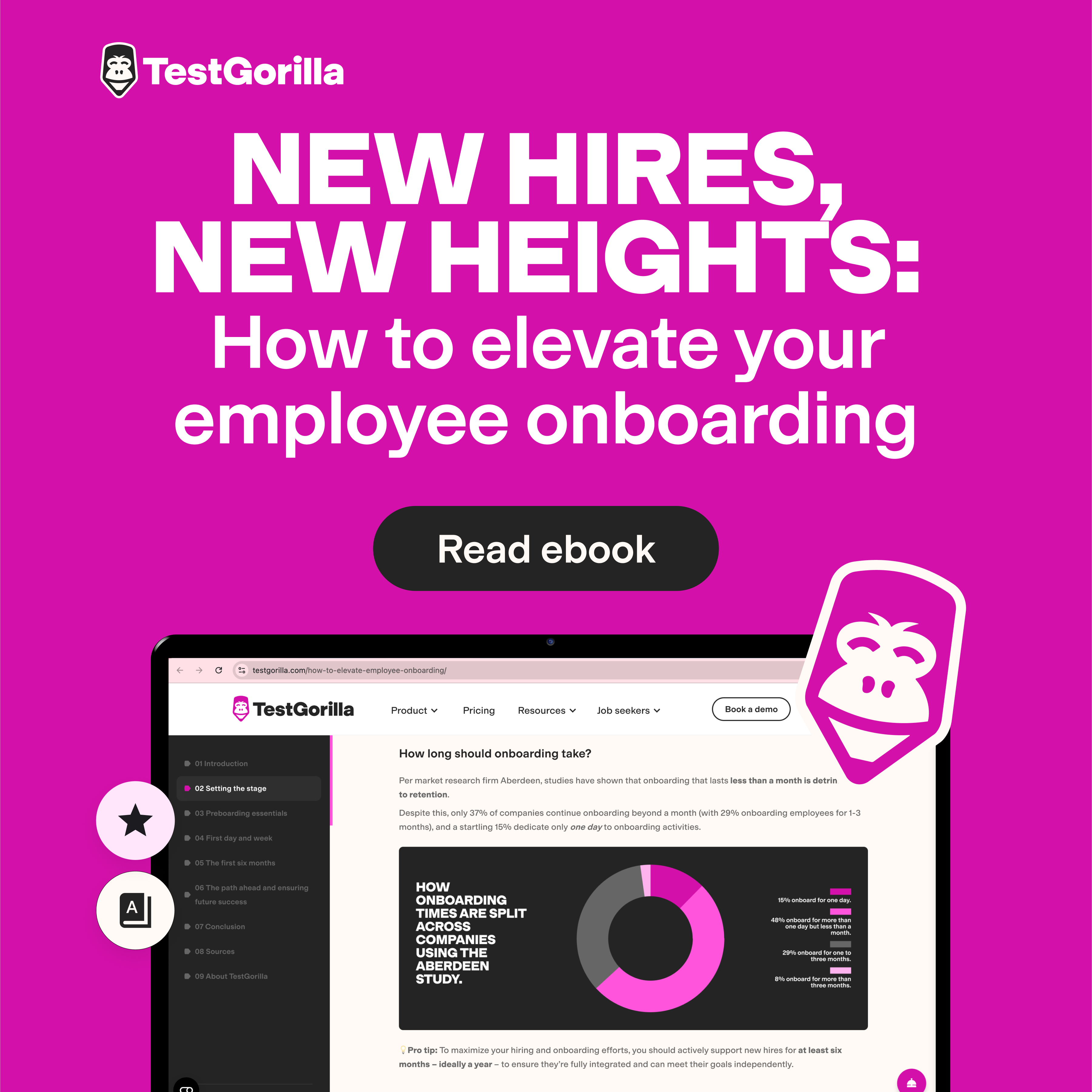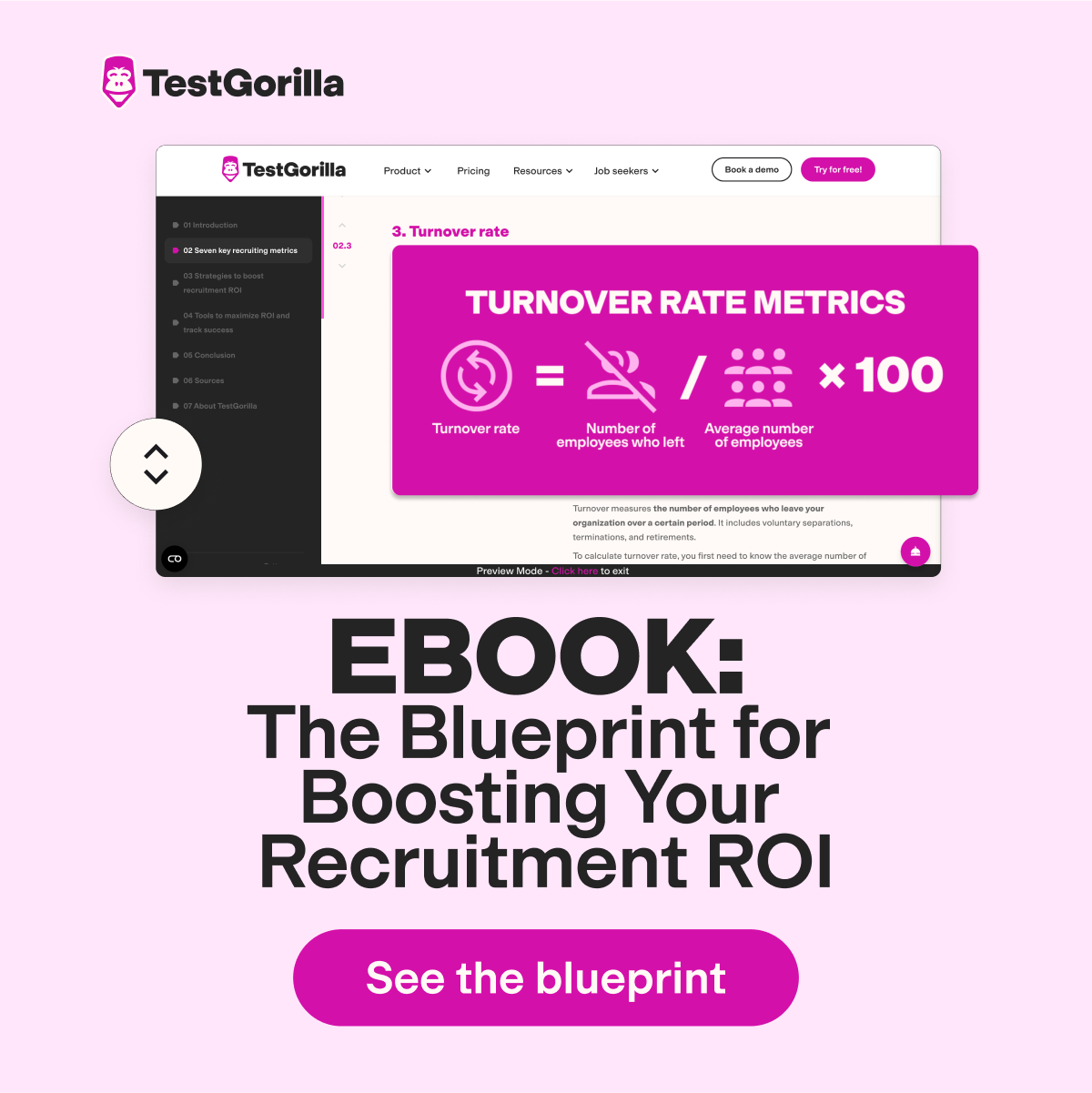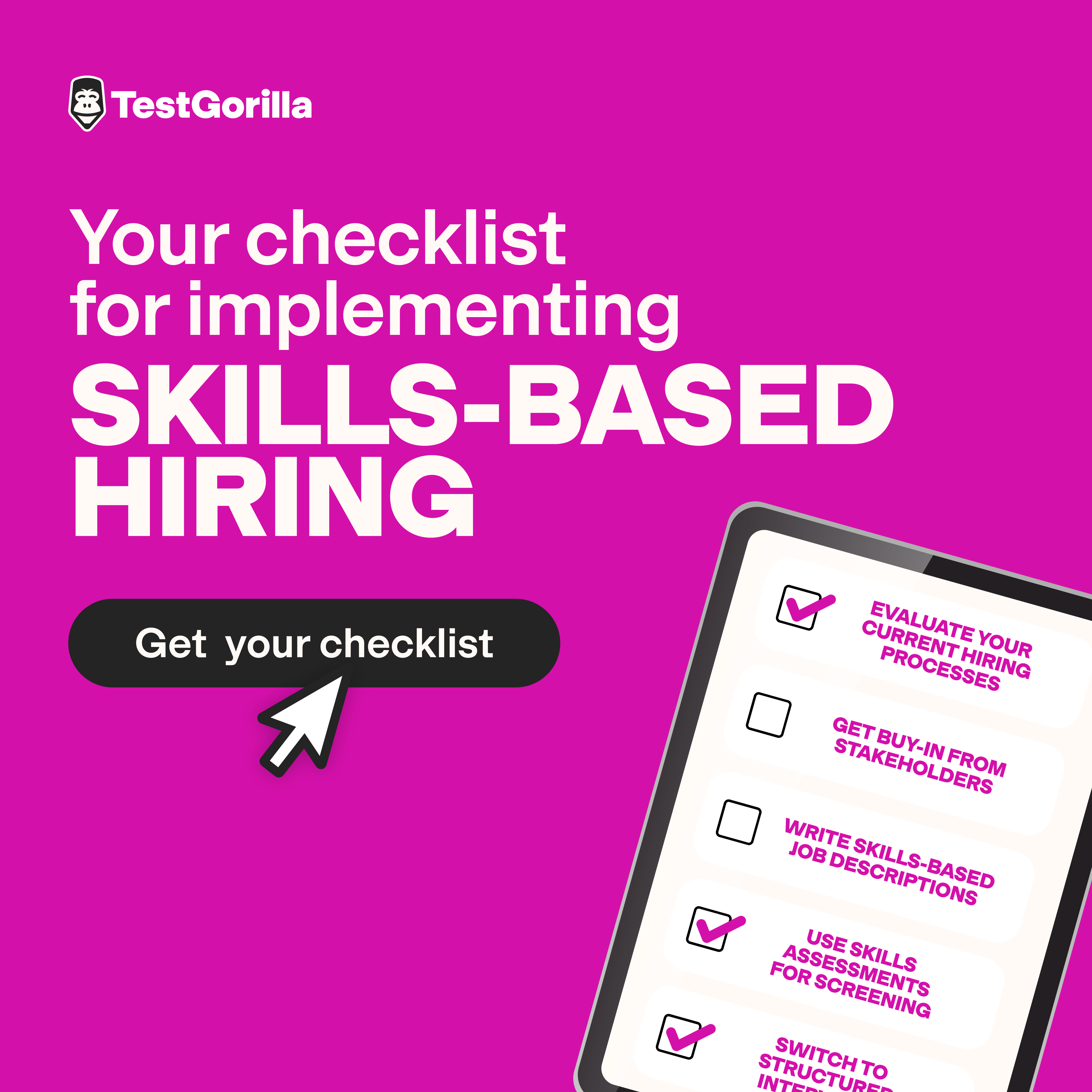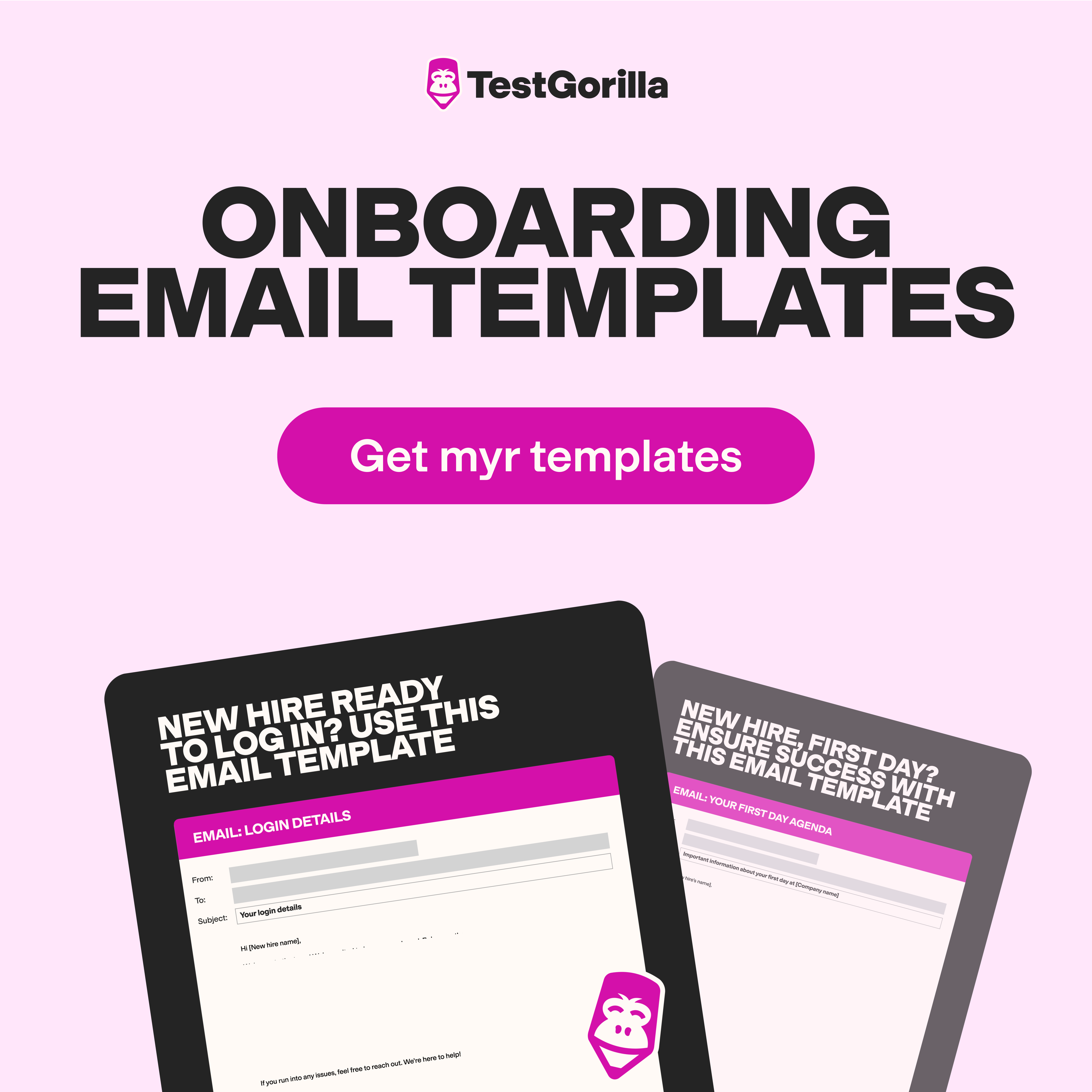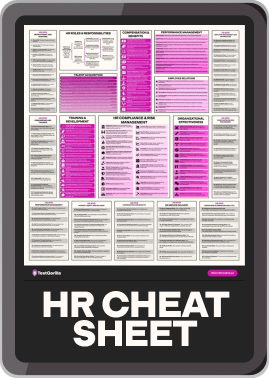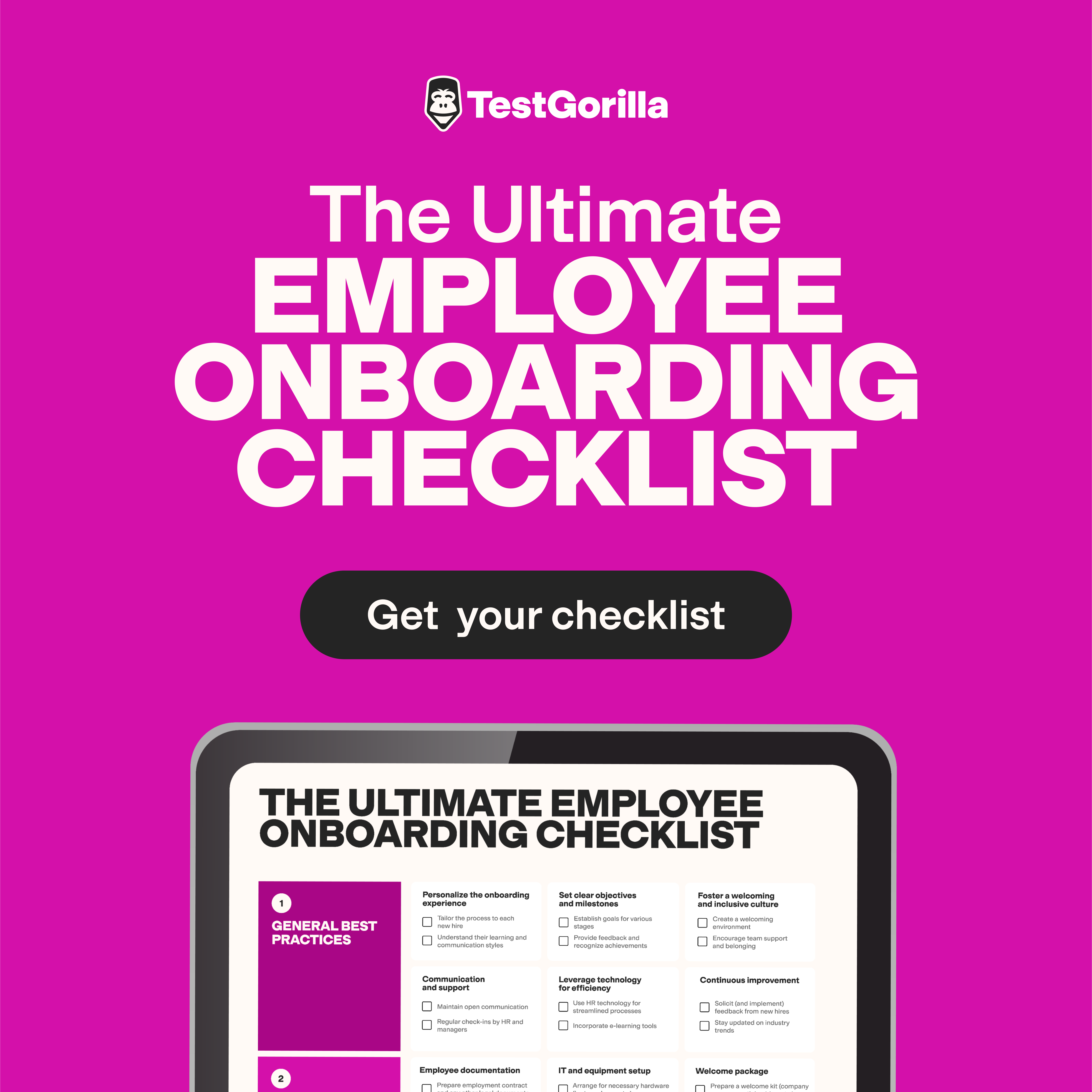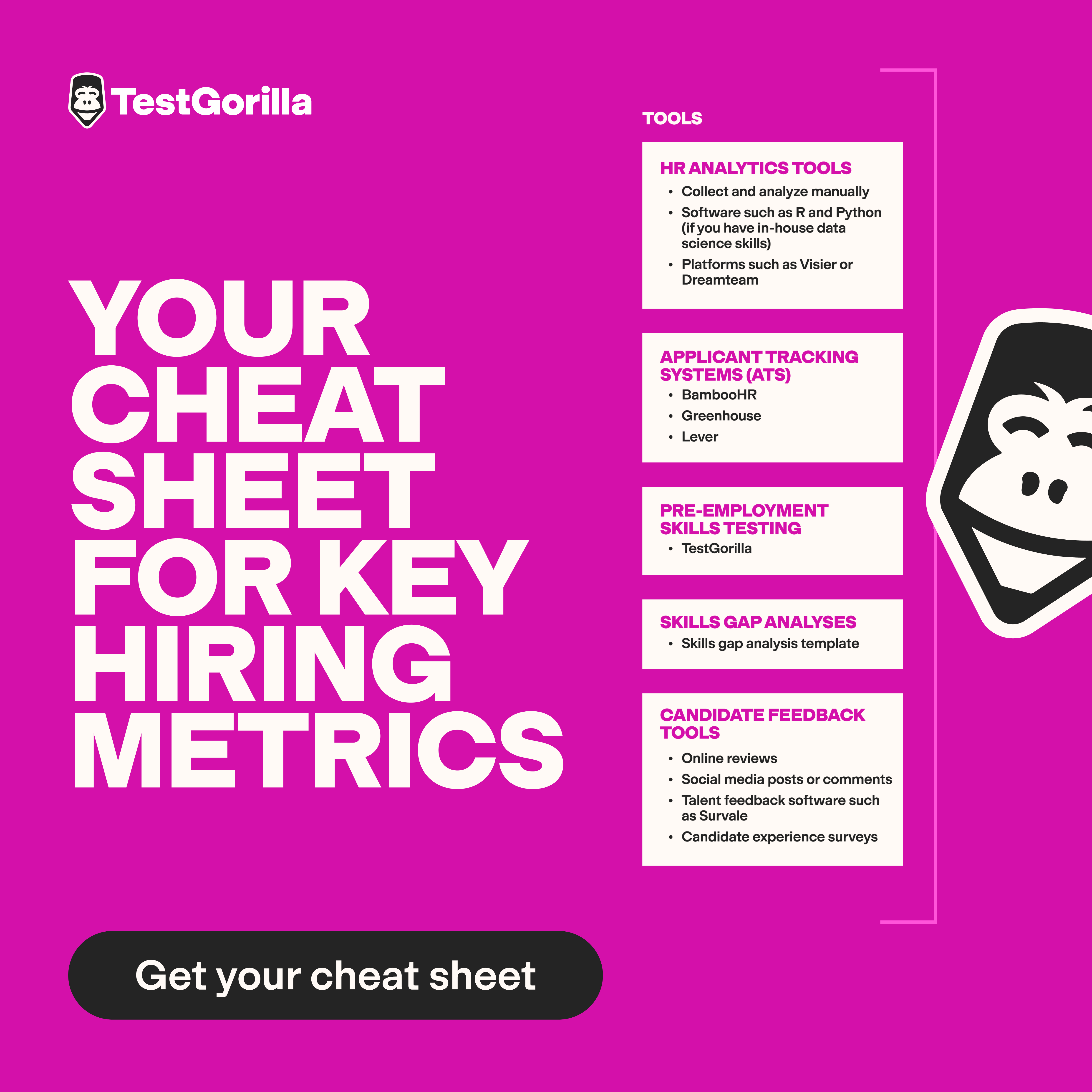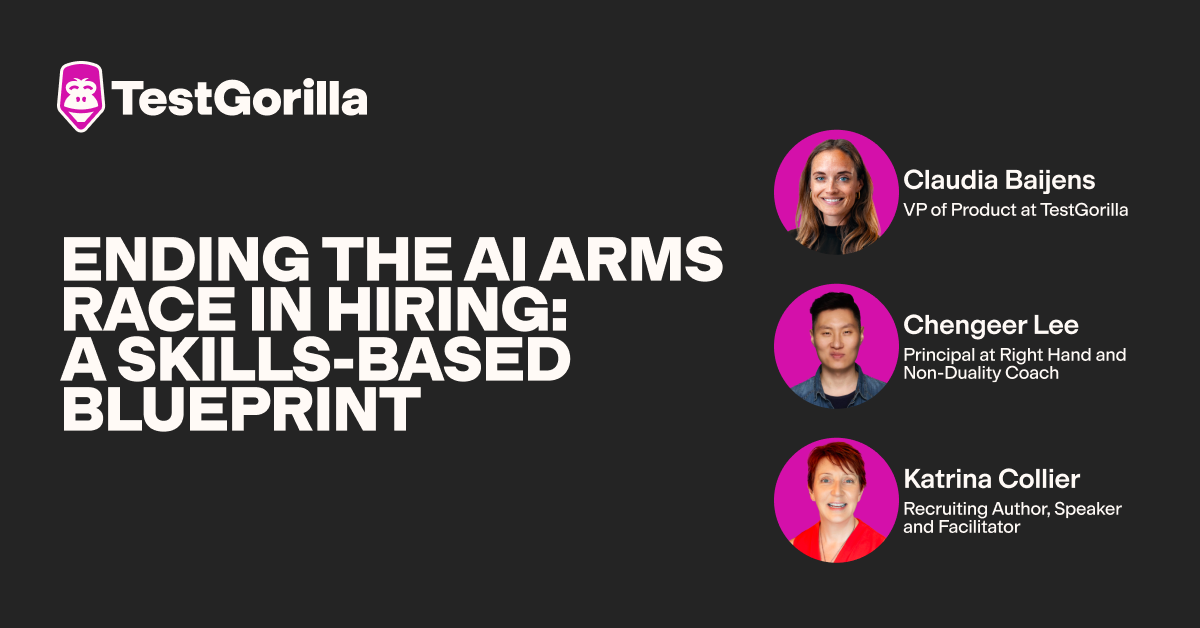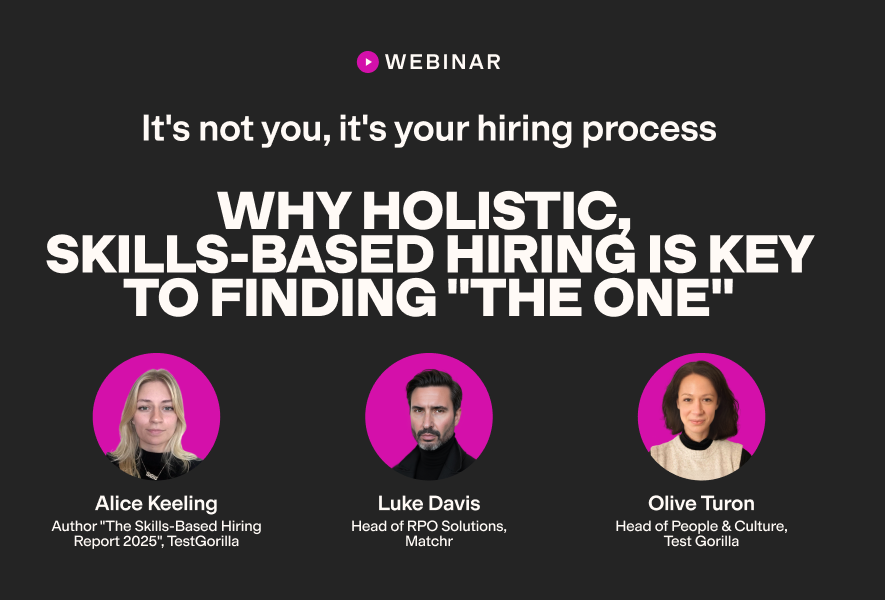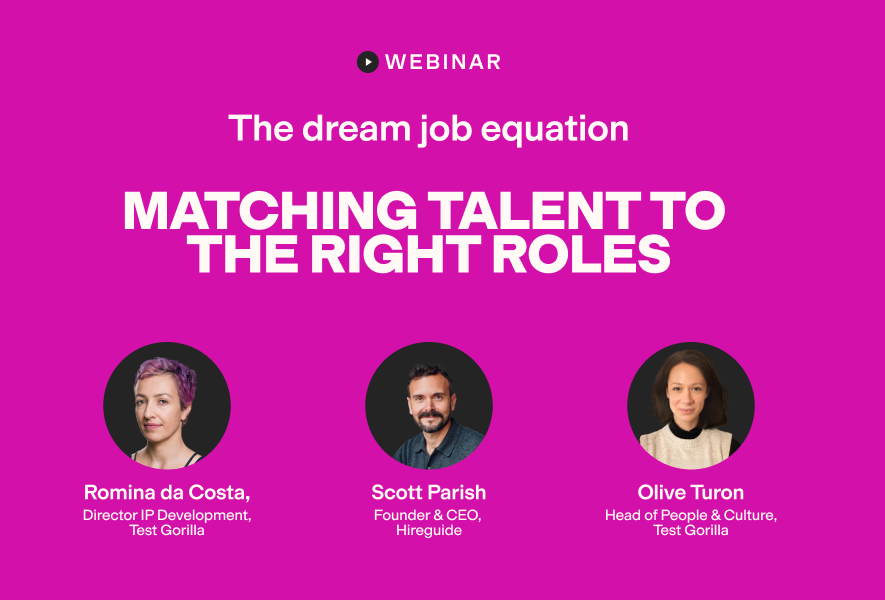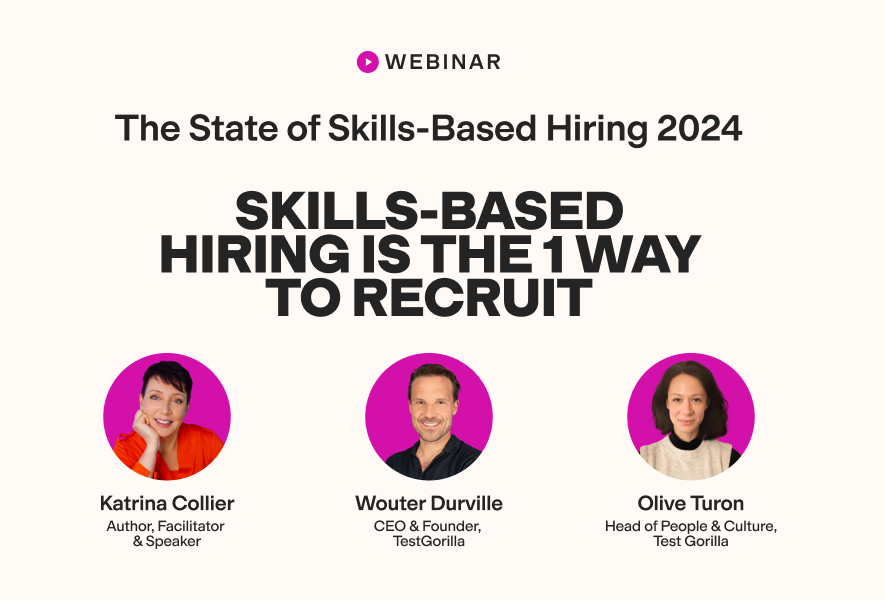DISC vs. 16 Personalities: Which test should you use in your hiring process?
When teams lack cohesion, companies fall apart. That sounds dramatic, but the consequences of a mis-hire are real: more team tension, counterproductivity, and project disruption.
But there’s a way to avoid dreaded mis-hires. You can use personality assessments like the DISC and 16 Personalities tests during hiring to ensure you hire individuals with the right traits to mesh well with the rest of your team.
Both tests are popular, but which is right for your hiring process? Read our DISC vs. 16 Personalities comparison guide below to find out.
What is the DISC test?
The DISC test is a personality assessment that measures people’s behavioral style(s). In the context of work, it can be used to identify individuals’ different ways of working and interacting within teams. It’s based on the DISC model, which sorts personality and behavioral traits into four main categories:
Dominance (D): These are direct, decisive doers who can be domineering. People who score highly on this trait will likely take charge in the workplace and may tread on colleagues' toes – sometimes without realizing.
Influence (I): These individuals are interactive and inspiring. People with a high influence score often act as the push that stagnant teams need to get into action. However, they tend to be impulsive and might sometimes irritate their teammates.
Steadiness (S): These are stable, sincere supporters who can be overly sensitive and slow when businesses need speed. Steady people tend to perform best in environments with strong routines where teamwork is critical.
Conscientious (C): Cautious, careful, and often compliant, conscientious types can also be calculating and even condescending. Those with a high conscientiousness score do well in specialist roles that value expertise and technical ability.
There are 12 styles an individual can fall into: one of the four primary styles or one of the eight DISC combinations (DI, ID, IS, SI, SC, CS, CD, and DC).
At work, these styles influence individuals’ interactions with colleagues, communication styles, and even suitability for certain roles and responsibilities.
For example, someone with high dominance (D) and influence (I) scores is likely to be a good fit for leadership roles in the workplace. Meanwhile, people with high steadiness (S) and conscientiousness (C) scores often become the reliable backbone of teams, helping produce top-notch work efficiently.
It’s important to note that every individual is a mix of these four different styles – just to varying degrees depending on their test results. In contrast to the 16 Personalities test, which we’ll explore next, few people will be one pure DISC type. We’ll also go into the reasons for this difference below.
What is the 16 Personalities test?
The 16 Personalities test is an assessment that sorts individuals into one of 16 personality types, based on four scales:
Extroversion (E) vs. Introversion (I): This scale indicates where people focus their attention and get their energy. Extroverts draw their energy from external sources, while introverts look inward. Typically, introverts need time to recharge away from others, so they often prefer working alone. Extroverts tend to need more interaction to perform at their best.
Sensing (S) vs. Intuition (N): This scale is about how people process information. Sensing types do their best work with more hands-on, practical tasks because they’re focused on what they can see and understand with their five senses. Intuitive types look at the bigger picture, focus on patterns, and put more faith in what can’t be seen, like imagination.
Thinking (T) vs. Feeling (F): This scale reflects how people make decisions. Thinking types objectively analyze situations and then decide logically, using facts and data. Feeling types use their values to make decisions with empathy and harmony in mind, focusing on how those decisions might impact people.
Judging (J) vs. Perceiving (P): This scale covers how people deal with the world around them. Judging types enjoy structure and order, preferring to plan and settle matters in advance. Meanwhile, perceiving types opt for flexibility and spontaneity, keeping their options open and adapting to new information on the fly.
The different combinations of each scale give a total of 16 different personality types. Each combination – such as the Commander (ENTJ) or the Adventurer (ISFP) – defines how people act and interact with others in their personal and professional lives. For more information, read our guide on using 16 personalities for hiring.
The best insights on HR and recruitment, delivered to your inbox.
Biweekly updates. No spam. Unsubscribe any time.
DISC vs. 16 Personalities: Differences & pros and cons for hiring
Now that you know more about each test, let’s compare their differences and spotlight their pros and cons for hiring.
Key differences between DISC and 16 Personalities
DISC is a straightforward model with four primary styles that can be combined. It focuses purely on observable communication, interaction, and behavior.
Meanwhile, the 16 Personalities test reveals much more about the candidate, offering insight into their preferences, motivations, and approaches to decision-making.
Here are the main differences between the two tests:
Focus
DISC evaluates observable behavior between individuals more than what’s going on in different people’s minds.
16 Personalities goes a lot deeper into individuals’ underlying personality traits and psychological preferences and how they interact with the world around them.
How “personality” is viewed
DISC acknowledges that people’s behavior can change in certain situations, while the 16 Personalities test sees personality as deeply rooted and mostly unchanging.
Content and format
DISC is shorter than the 16 Personalities test and contains a list of statements candidates respond to – ranking them from 1 (“very inaccurate”) to 5 (“very accurate”).
Conversely, the 16 Personalities test allows for more complete candidate profiling. It’s an introspective, self-evaluation questionnaire that asks candidates to consider their preferences under various circumstances.
Implications
You can practically and immediately apply the DISC test in the workplace to improve general communication, resolve conflicts, and enhance team effectiveness.
Meanwhile, 16 Personalities assessments can have further-reaching implications and may impact personal development, career planning, and personal relationship dynamics.
We’ll explore what this distinction means later on.
DISC pros and cons
Pros
Quick to complete
Simple assessment of observable team dynamics
Perfect for conflict resolution
Cons
Narrowly focused and can oversimplify individuals’ personalities
Doesn’t assess emotional intelligence
Isn’t a great predictor for job performance
May be more appropriate for evaluating existing employees than prospective candidates
16 Personalities pros and cons
Pros
Provides detailed insights into unique, complex personality types
Allows you to assess how candidates might grow within your organization
Especially useful if you want to nurture and retain talent
Cons
Might be impractical for more agile businesses that need to hire quickly
Is a self-assessment, so test-taskers might limit themselves or skew results
Is subjective, which could increase bias and lead to pigeonholing people
Making the choice: Which test is right for you?
Know your hiring goals before choosing a test
To use the DISC and 16 Personalities tests effectively, you need to understand your hiring goals. Strip out the personality factor for a moment. What do you want to achieve for your business?
Hiring goals aren’t universal and prepackaged. Decide which professionals you need, how many, and for what roles. Are you replacing employees or expanding your team?
Once you’ve settled your business goals, you choose the tests that work best with how to achieve them.
How you can use each test
Use the DISC test to:
Make quick, pragmatic hiring decisions where longer 16 Personalities tests are unnecessary or unfeasible.
Identify how candidates make decisions and communicate with their teammates.
Immediately boost team dynamics or resolve conflict quickly.
Highlight potential problem areas.
Balance teams to comprise different DISC styles who work more harmoniously together.
Use the 16 Personalities test for:
A comprehensive understanding of different candidates’ personalities.
Deeper insight into candidates’ preferences and motivations at work.
Nuanced understanding of each personality’s distinctive strengths and areas for growth.
Hiring for positions that require specific traits and abilities that certain types might have – like Logisticians (ISTJ) for more detail- and process-driven, investigative roles or Campaigners (ENFP) for roles that demand a unique blend of creativity and personability.
Get the best of both worlds: Combine DISC and 16 Personalities
While each test is great for specific use cases, there’s no reason you can’t use both during recruitment. Once you understand a candidate better with the 16 Personalities test, the DISC test helps you see how they’d fit into your existing team.
If you apply personality tests strategically and purposefully, you’ll be on your way to streamlining your hiring process and ensuring successful hiring outcomes. That means avoiding expensive, time-consuming mis-hires and building stronger, better-performing teams.
Pair DISC and 16 Personalities tests with TestGorilla talent assessments
DISC is a simple, four-type model that contrasts with the extensive 16 Personalities test. While DISC is the ideal tool for quick decisions, 16 Personalities goes deep to help you get the most from candidates and teams in the long term.
TestGorilla offers both tests to give unique insights into candidates’ behavior, communication styles, and personalities. Our test library includes hundreds of other multi-measure talent assessments – from other personality tests to tests that measure job-specific skills, cognitive abilities, and more.
Start improving your hiring today by booking a live demo or signing up for a free TestGorilla account.
You've scrolled this far
Why not try TestGorilla for free, and see what happens when you put skills first.

